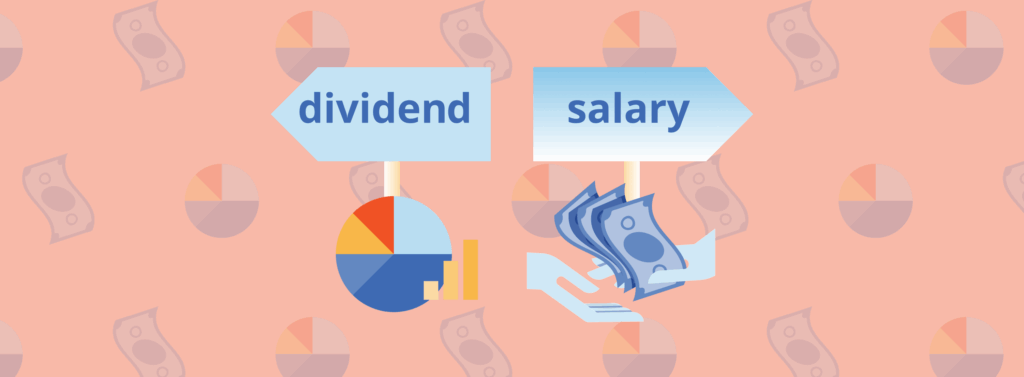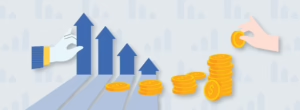How do I pay myself from my business in Canada?
Wondering how to pay yourself from your business in Canada? This guide shows how to do it right, reduce taxes, and avoid costly mistakes.
Should I take a salary, or should I pay myself dividends?
You’re not alone. This is one of the most asked questions I get from clients. And in most cases, people don’t totally understand the difference or how their decision will affect taxes, cash flow, or retirement planning.
Why This Matters
Choosing between salary vs. dividends in Canada isn’t just a formality. It changes:
- How much tax you pay (personally and corporately)
- Whether you’re building up retirement income through CPP
- How flexible you can be with taking money out of your business
- How much admin and CRA compliance you’re dealing with
If you are new to owning a business, this is likely one of your first big financial choices. Get it right early, and it’ll save you stress later.
Option 1: Paying Yourself a Salary
A salary is exactly what it sounds like. You pay yourself like an employee of your own corporation. That means setting a regular amount, running payroll, and submitting source deductions.
Why some owners go with salary:
- CPP contributions: You’re building retirement income. If the business fails, that CPP stays with you. You don’t lose what you’ve paid in.
- Set-it-and-forget-it: You decide on a number and use it moving forward. No need to change it every month.
- Lowers your corporate tax: Salary is an expense, so it brings down your business’s taxable income.
What to watch out for:
- You pay more upfront. Compared to dividends, salary means higher immediate tax. A good chunk of that is CPP, which you’ll get later, but it still affects short-term cash flow.
- You’re on a tight schedule. Source deductions are due monthly or quarterly. CRA charges a 10% penalty if you’re late.
- It’s not flexible. You can’t just grab money when you need it. You’ve got to stick to payroll rules and reporting deadlines.
Option 2: Taking Dividends
Dividends are money you take out of your corporation as a shareholder, not as an employee. You’re not running payroll; you’re drawing from profits.
How do you pay dividends to yourself in Canada? It’s simple, but you need to do it properly:
- Make sure your corporation has after-tax profits (retained earnings)
- Declare a dividend (usually with a simple shareholder resolution)
- Issue a T5 slip at year-end
- Report the dividend on your personal return
Pros of dividends:
- Total flexibility: You can pull money when it makes sense, not on a fixed schedule.
- Tax deferral: You don’t pay tax until you file your personal return.
- Often taxed at a lower rate: The Canada dividend taxation system offers credits that reduce your dividends Canada tax rate, especially on eligible dividends.
Cons of dividends:
- No CPP contributions: So unless you’re saving separately for retirement, there’s nothing building in the background.
- Easy to get behind on taxes: There’s no tax withheld automatically. If you’re not disciplined about setting money aside, things can get ugly fast.
Corporate Tax Implications
Salary: Your salary gets deducted as an expense from the corporation’s income. You’ve already paid tax through source deductions, so the company doesn’t pay anything further on that amount.
Dividends: Dividends come from profits after the company has already paid tax. Then, you pay personal tax on the dividend. So it’s taxed twice — once at the corporate level and once personally. But because of how dividends are taxed in Canada, it’s often still efficient, especially if you’re in a lower tax bracket or leaving money in the company to pull out later.
Personal Tax Differences
If you’re taking salary:
- You’ve already paid most of your personal tax through payroll
- You get CPP contributions
- You build RRSP contribution room
If you’re taking dividends:
- You pay tax when you file your personal return
- No CPP, no RRSP room
- But possibly a lower effective tax rate depending on your income and province
Long-Term Planning: CPP, RRSPs, and Cash Flow
The biggest long-term factor is CPP. With salary, you’re building it. With dividends, you’re not.
If you take salary, you also get RRSP room. That opens another door for long-term investing and tax deferral.
With dividends, there’s no CPP or RRSP. But some owners leave money in the corporation, then pay it out slowly after retirement at a lower tax rate. That can work well, but only if it’s planned properly. Unlike RRSPs, which only allow limited withdrawals starting at age 70, dividends offer complete flexibility in how and when you take the money out.
Common Mistakes I See
- Not filing a T5 when taking dividends: If you’re paying yourself dividends but not filing the T5, CRA can reassess it as undeclared income — plus penalties and interest.
- Not saving for tax on dividends: Dividends feel easy to take out, but tax adds up. I’ve seen people spend it all and end up with a big bill they weren’t ready for.
- Messing up payroll deductions: With salary, it’s easy to miss a payment or under-remit. CRA penalties are automatic and harsh — 10% right off the bat if you’re late.
FAQ: How to Pay Yourself from Your Corporation in Canada
- How do I pay myself dividends? You declare a dividend, issue a T5 slip, and report it personally. No payroll needed, but you do need accurate records.
- How do I pay myself a salary from my corporation? Set up payroll, choose a consistent amount, remit CPP and tax withholdings on time, and issue a T4 at year-end.
- Which has a better tax rate — salary or dividends? There’s no universal answer. Salary gives you deductions and builds CPP. Dividends in Canada are taxed at a lower rate, but you don’t get CPP or RRSP room. It depends on your income level and overall strategy.
- How to pay yourself from a corporation without overpaying tax? Use the right mix. That’s the key. Most clients I work with benefit from a combination of salary and dividends tailored to their income, savings goals, and stage of business.
What I Usually Recommend
If you want CPP and structure, go with a $70,000 salary and take dividends on top of that.
If you want flexibility and don’t care about CPP, go with dividends only. Just be ready to handle the taxes yourself—and remember, if you don’t contribute to CPP, you’re entirely responsible for saving for your own retirement.
If you’re making under $70K and want to build CPP, do half salary, half dividends to keep it balanced.
Why This Isn’t DIY Territory
Most people trying to figure this out on their own either overpay taxes, miss CRA deadlines, or forget to file key forms like T5s or T4s. That opens you up to penalties or worse, audit risk.
At LedgerLine, we help business owners and nonprofits:
- Choose the best mix of salary and dividends
- Stay compliant with CRA rules
- Minimize tax and plan for retirement properly
Final Advice
If you’re asking how to pay yourself from your business in Canada, the best answer isn’t “salary” or “dividends.” It’s a strategy — and it depends on what you want long-term.
Do you want CPP? Do you want flexibility? Are you saving for retirement on your own? These are the things we figure out together.
How LedgerLine Can Help
We simplify this.
You don’t need to guess, Google, or risk getting it wrong. Whether you’re wondering how to pay yourself from your business, pay dividends to yourself, whether salary is better for your business, or just want to stop worrying about tax season, we’re here to help.
Let’s figure out the best way to pay yourself and make sure it works for your goals.










